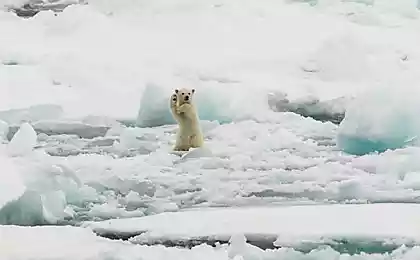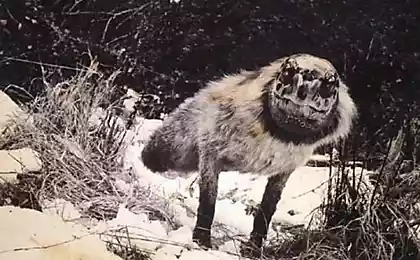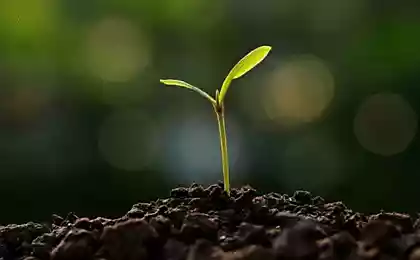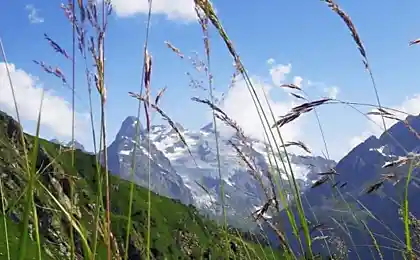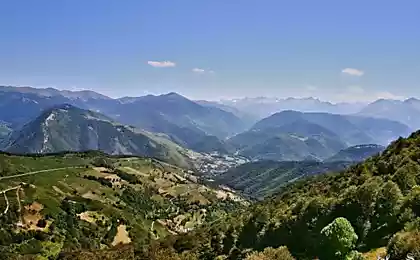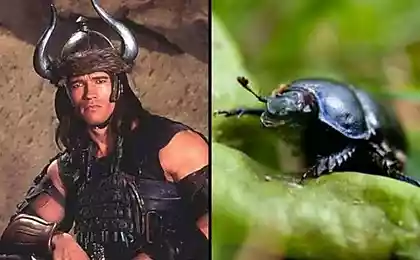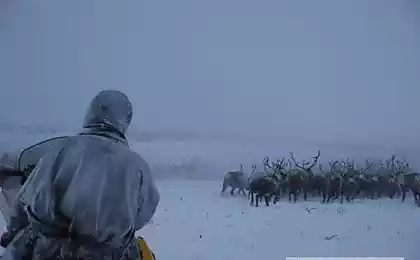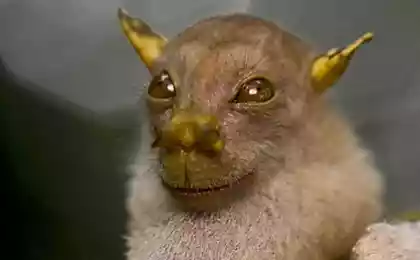15007
Flora and Fauna of Suriname (25 photos)
A team of scientists from Conservation International went in search of rare and unknown species of animals, insects and plants in Suriname - a country on the northeast coast of South America. During the expedition was investigated 1,378 species in mountain areas, including 60 species that were previously unknown. Let's take a closer look at the varied wildlife of the beautiful places. Tree frog (Hypsiboas geographicus) scrambles for a branch in the forest near the mountains Kasikasima.
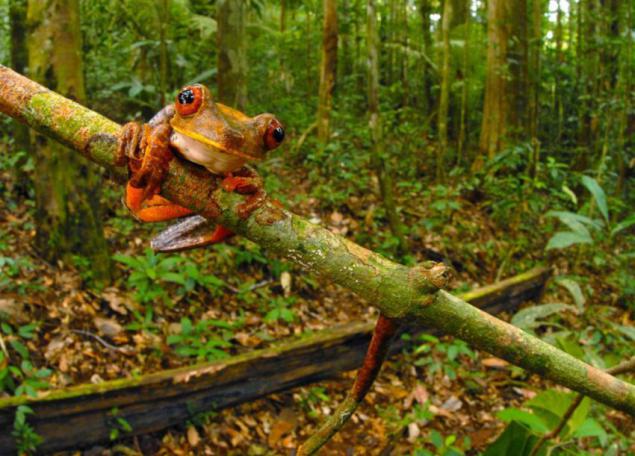
Many species of insects secrete a waxy Fulgoroidea secret that sometimes freezes, forming long filaments, as in this picture. These filaments can provide protection from predators who pounce on them, taking the body of his victim. Thread break off, saving the life of an insect.
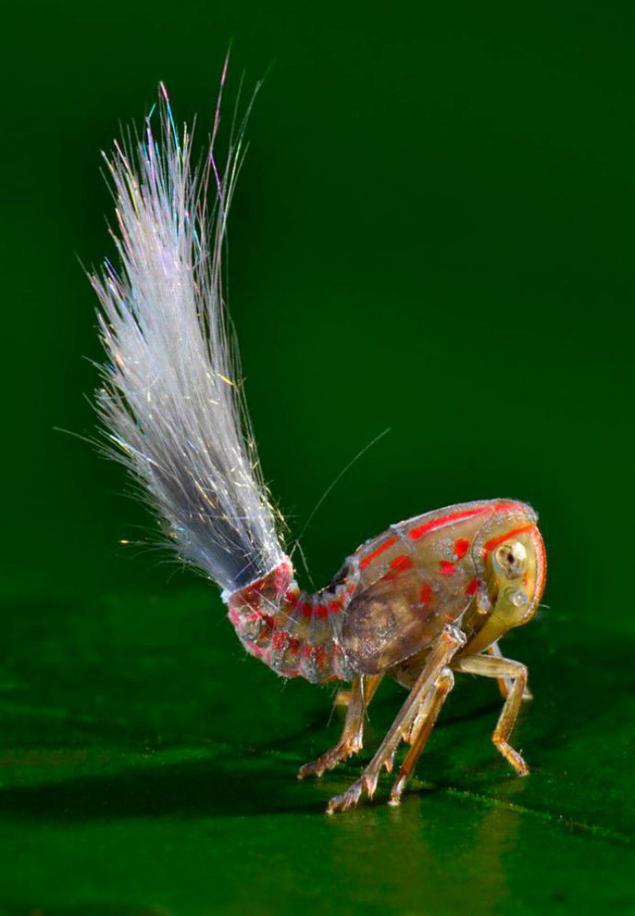
Coprophanaeus lancifer - the largest species of scarab beetles in South America.
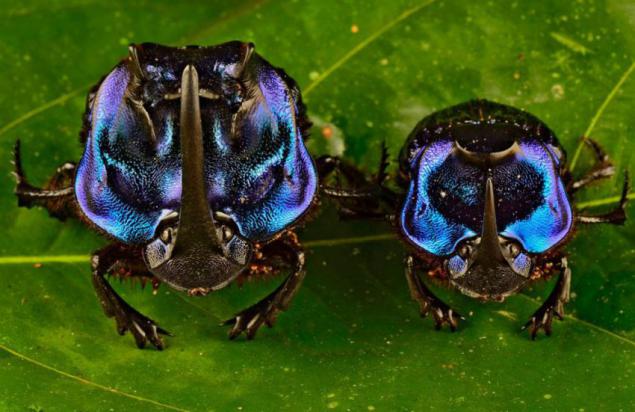
Margay (Leopardus wiedii) sitting on a tree.
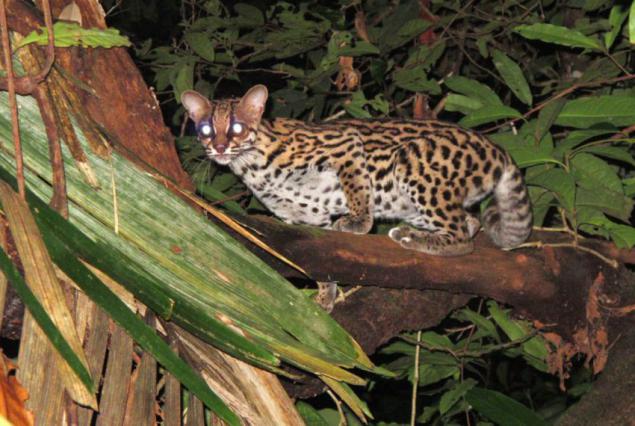
Carpenter ant (Camponotus sp.) Eating dead nasekomoё. During the expedition were found 149 species of ants, and this is not an exhaustive list.
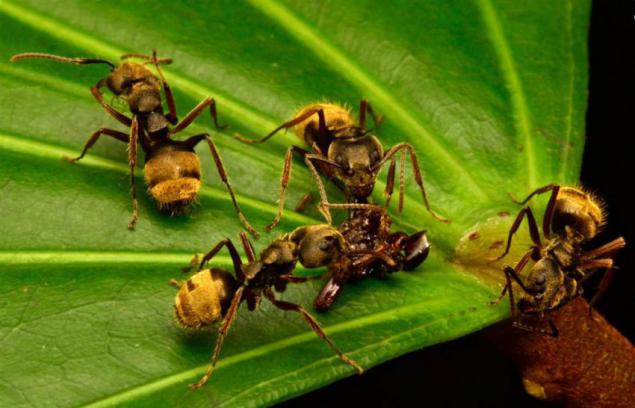
Tree frog Hypsiboas sp., As well as other amphibians, has a semi-skin, making it hypersensitive to changes in the environment.
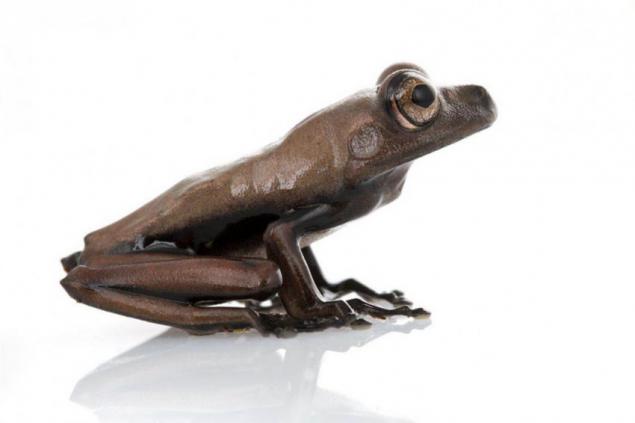
Storm clouds loom over the rapids of the river Palumeu near the small village of Campo in the south-east of Suriname.
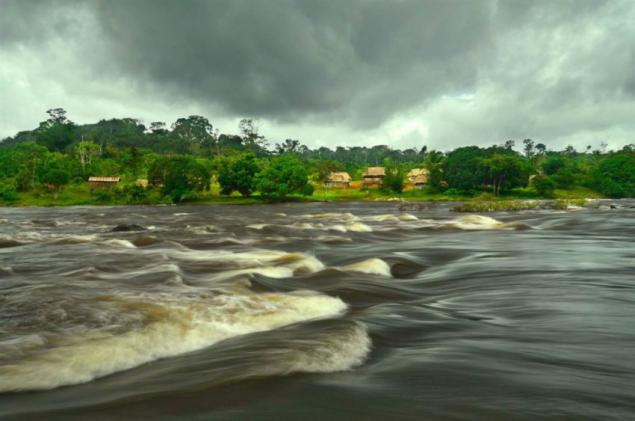
Phragmipedium lindleyanum - one of several rare and beautiful species of orchids found in previously investigated the mountains Grens in Suriname.
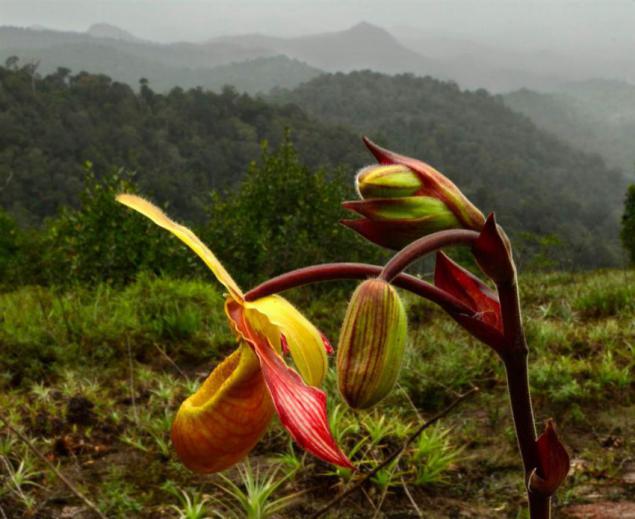
This tiny beetle (Canthidium cf. minimum), may represent a previously unknown type of science, and even race. The length of its body is only 2, 3 millimeters. Perhaps it is the smallest of dung beetles in the Guiana Highlands.
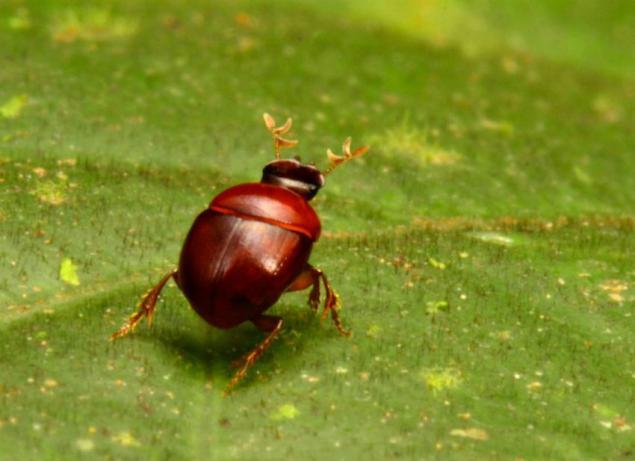
While the majority of grasshoppers feed on leaves, view Copiphora longicauda preys on insects and other invertebrates.
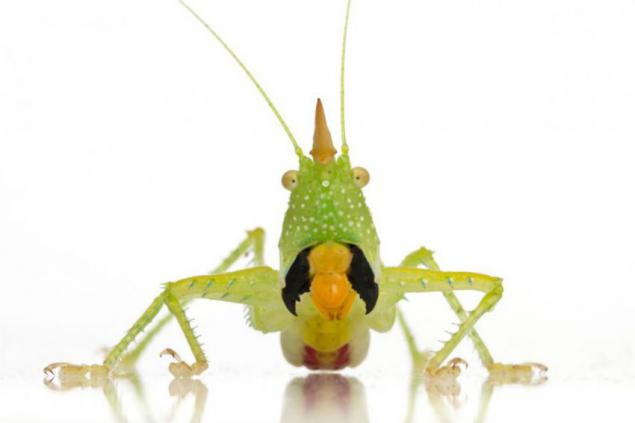
Many mammals is extremely difficult to see in the forest, so scientists have to install the camera with automatic shutter release. Photo: Margay interested in one of these cameras. The camera is equipped with an infrared sensor that detects the passing of animals and releases the shutter
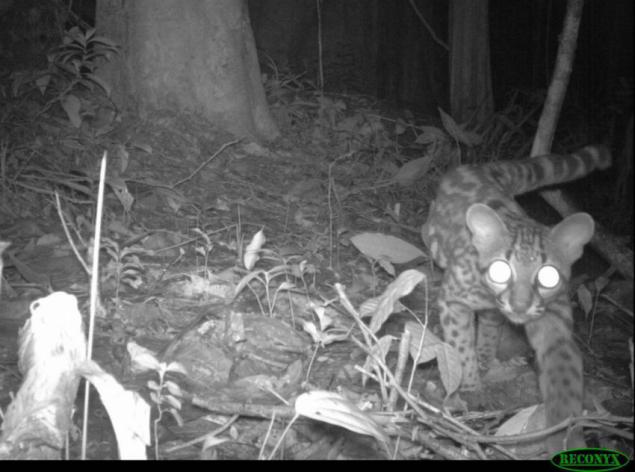
Unique granite mountain Kasikasima rises 700 meters above the rainforest. On this mountain, scientists have discovered some unusual species, including previously unknown to science beetles.
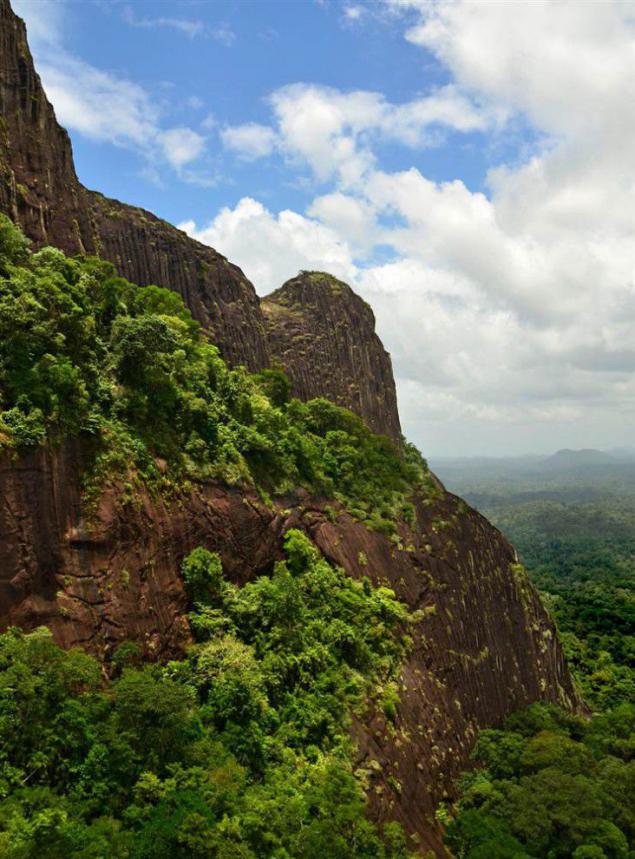
Southeast Suriname may seem a tropical paradise, but not for all living organisms. Photo: Wolf spider eating a dart frogs.
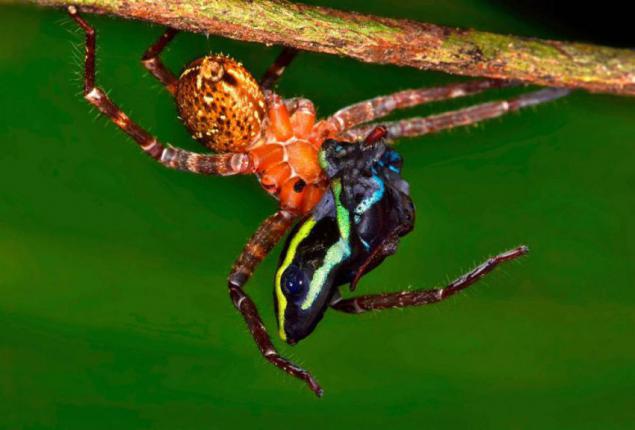
Creek at the foot of Kasikasima in Suriname.
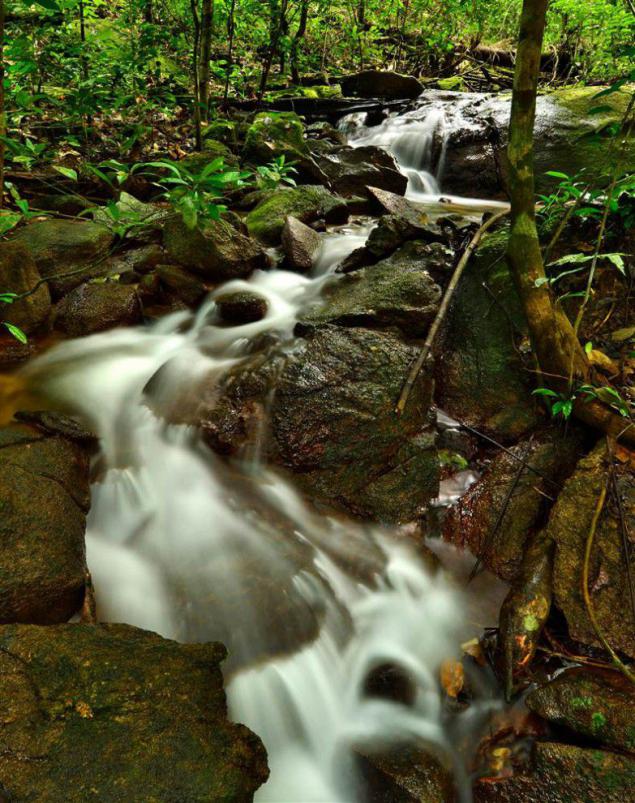
Dart frogs species Anomaloglossus sp. Locals use the poison dart frogs to hunt animals.
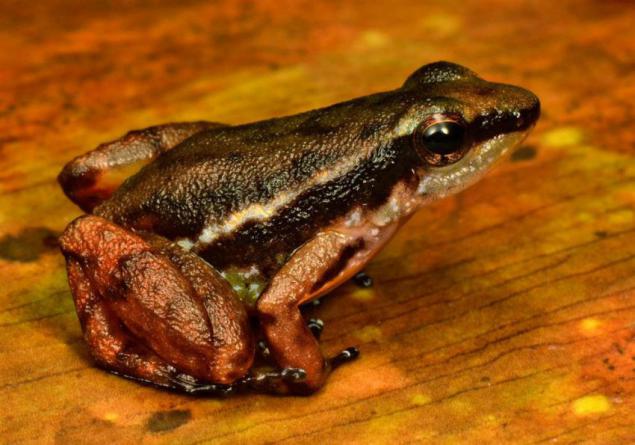
This grasshopper (Pseudophyllinae: Teleutiini) so atypical that perhaps scientists will assign it to a new genus. His torso is longer than usual, and the legs are covered with sharp spines that help deter predators
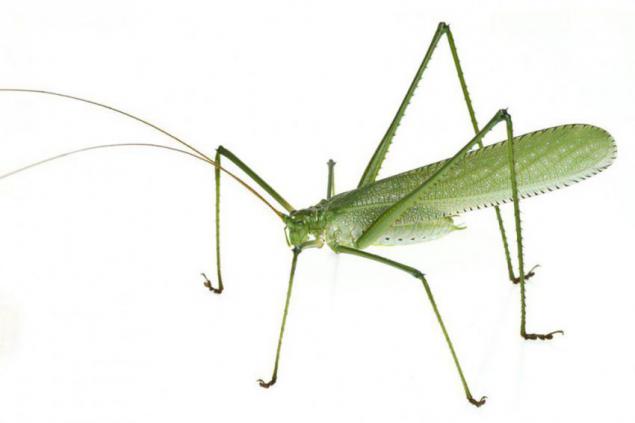
Bright coloring psevdokorallovoy snake (Erythrolamprus aesculpi) helps her to scare predators, because it is not as toxic as a real coral snake.
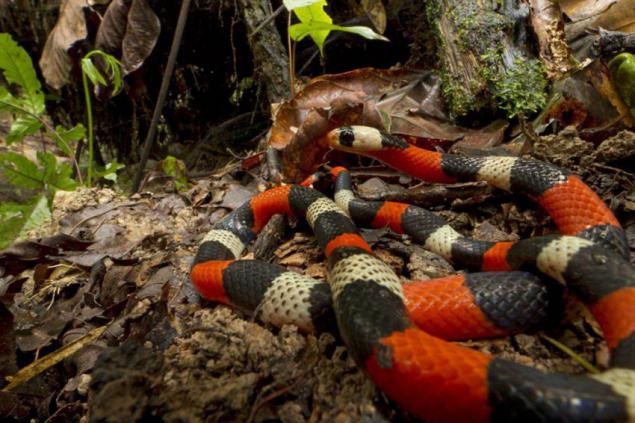
Bat species Artibeus planirostris able to pluck large fruit with their sharp teeth.
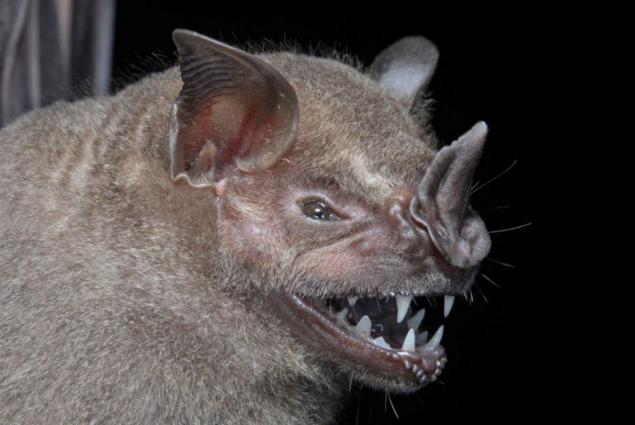
Opossum species Marmosops parvidens lives on trees and feeds on insects and fruit. Small mammals play an important role as carry seeds of plants and promote reforestation.
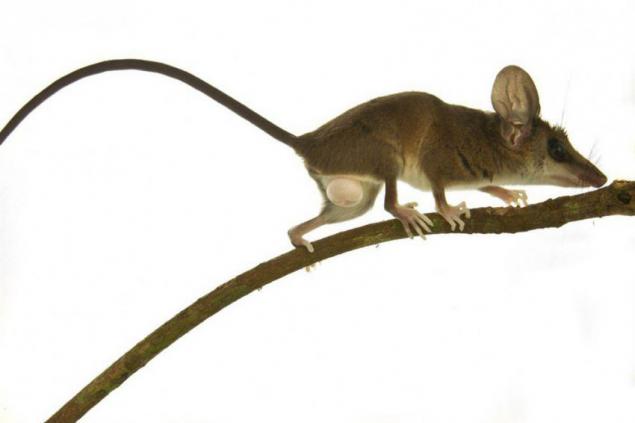
Marant (Peltogyne venosa) forms a massive aerial parts of the root system, which ensures the stability of the tree, especially in strong winds and floods.
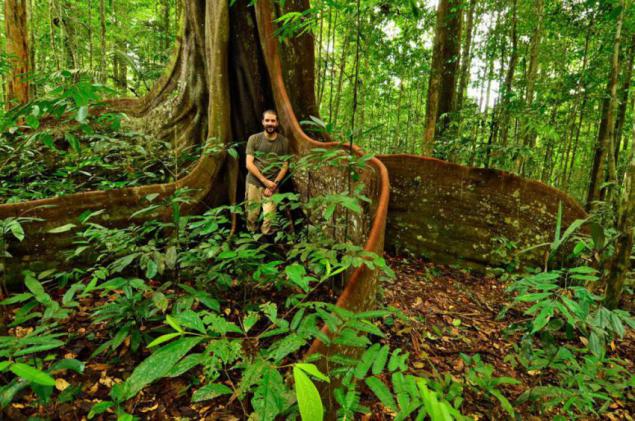
Mountains and vast virgin forests of south-eastern Suriname is often shrouded in clouds. This is one of the wettest parts of the country.
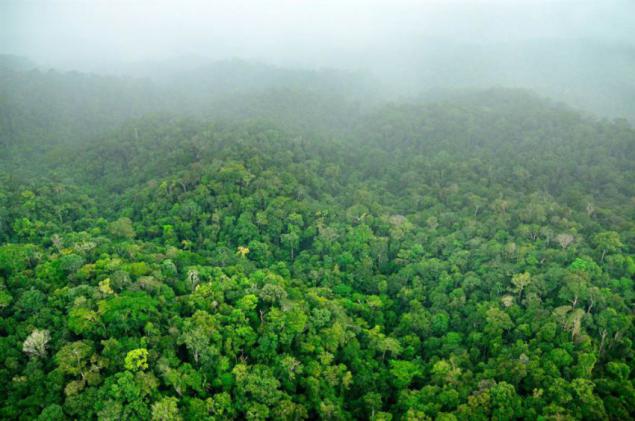
Tree frog Scinax sp. - One of the six new frog species discovered by scientists during an expedition to Suriname.
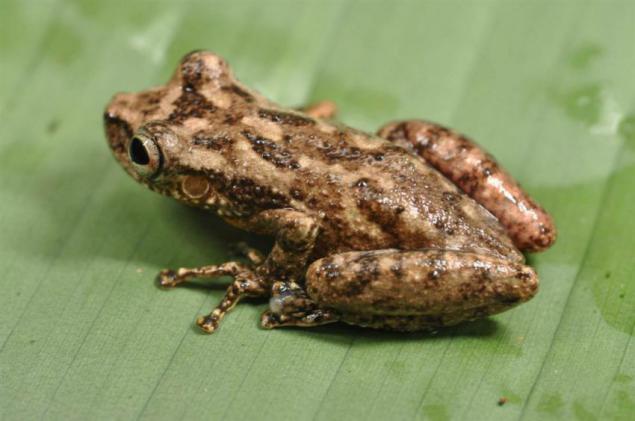
Employee Conservation International is in the middle of the flooded camp in the south-east of Suriname. Due to the unusually heavy rains Palumeu river burst its banks and flooded the camp, prompting scientists to leave earlier than planned.
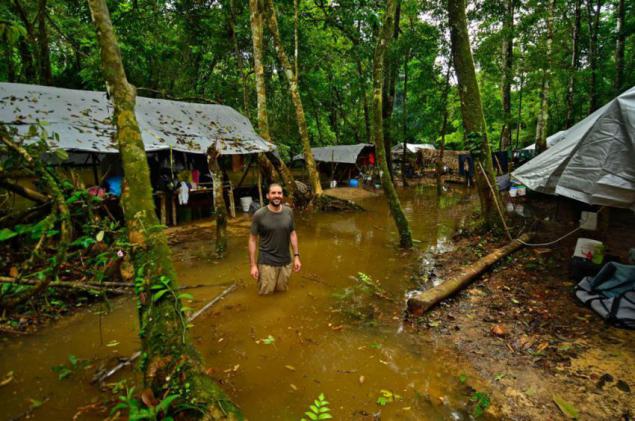
Semi-aquatic lizard Neusticurus bicarinatus lives in small ponds and streams and great swims underwater.
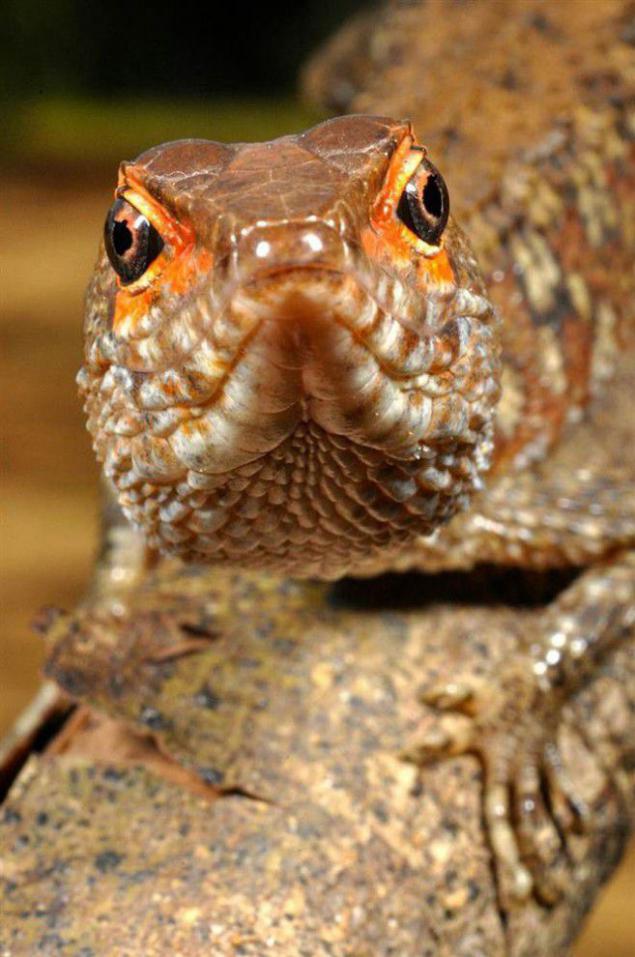
Hemigrammus aff. ocellifer - the closest relative of tetra fish, which is popular among aquarists.
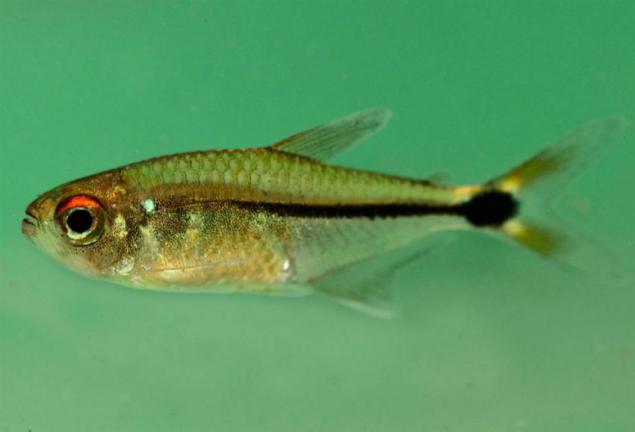
Source: science.mirtesen.ru

Many species of insects secrete a waxy Fulgoroidea secret that sometimes freezes, forming long filaments, as in this picture. These filaments can provide protection from predators who pounce on them, taking the body of his victim. Thread break off, saving the life of an insect.

Coprophanaeus lancifer - the largest species of scarab beetles in South America.

Margay (Leopardus wiedii) sitting on a tree.

Carpenter ant (Camponotus sp.) Eating dead nasekomoё. During the expedition were found 149 species of ants, and this is not an exhaustive list.

Tree frog Hypsiboas sp., As well as other amphibians, has a semi-skin, making it hypersensitive to changes in the environment.

Storm clouds loom over the rapids of the river Palumeu near the small village of Campo in the south-east of Suriname.

Phragmipedium lindleyanum - one of several rare and beautiful species of orchids found in previously investigated the mountains Grens in Suriname.

This tiny beetle (Canthidium cf. minimum), may represent a previously unknown type of science, and even race. The length of its body is only 2, 3 millimeters. Perhaps it is the smallest of dung beetles in the Guiana Highlands.

While the majority of grasshoppers feed on leaves, view Copiphora longicauda preys on insects and other invertebrates.

Many mammals is extremely difficult to see in the forest, so scientists have to install the camera with automatic shutter release. Photo: Margay interested in one of these cameras. The camera is equipped with an infrared sensor that detects the passing of animals and releases the shutter

Unique granite mountain Kasikasima rises 700 meters above the rainforest. On this mountain, scientists have discovered some unusual species, including previously unknown to science beetles.

Southeast Suriname may seem a tropical paradise, but not for all living organisms. Photo: Wolf spider eating a dart frogs.

Creek at the foot of Kasikasima in Suriname.

Dart frogs species Anomaloglossus sp. Locals use the poison dart frogs to hunt animals.

This grasshopper (Pseudophyllinae: Teleutiini) so atypical that perhaps scientists will assign it to a new genus. His torso is longer than usual, and the legs are covered with sharp spines that help deter predators

Bright coloring psevdokorallovoy snake (Erythrolamprus aesculpi) helps her to scare predators, because it is not as toxic as a real coral snake.

Bat species Artibeus planirostris able to pluck large fruit with their sharp teeth.

Opossum species Marmosops parvidens lives on trees and feeds on insects and fruit. Small mammals play an important role as carry seeds of plants and promote reforestation.

Marant (Peltogyne venosa) forms a massive aerial parts of the root system, which ensures the stability of the tree, especially in strong winds and floods.

Mountains and vast virgin forests of south-eastern Suriname is often shrouded in clouds. This is one of the wettest parts of the country.

Tree frog Scinax sp. - One of the six new frog species discovered by scientists during an expedition to Suriname.

Employee Conservation International is in the middle of the flooded camp in the south-east of Suriname. Due to the unusually heavy rains Palumeu river burst its banks and flooded the camp, prompting scientists to leave earlier than planned.

Semi-aquatic lizard Neusticurus bicarinatus lives in small ponds and streams and great swims underwater.

Hemigrammus aff. ocellifer - the closest relative of tetra fish, which is popular among aquarists.

Source: science.mirtesen.ru





